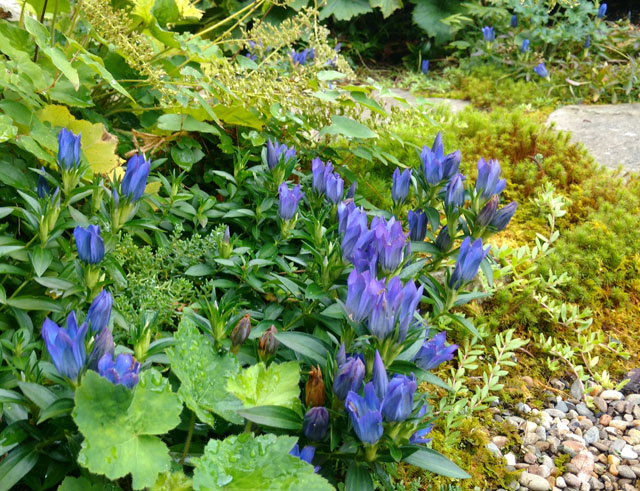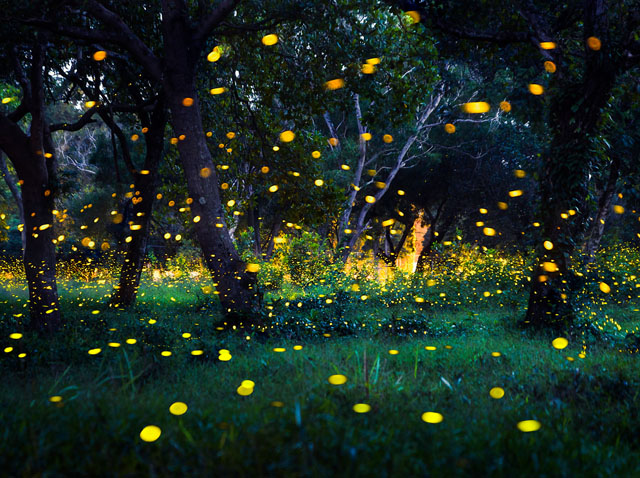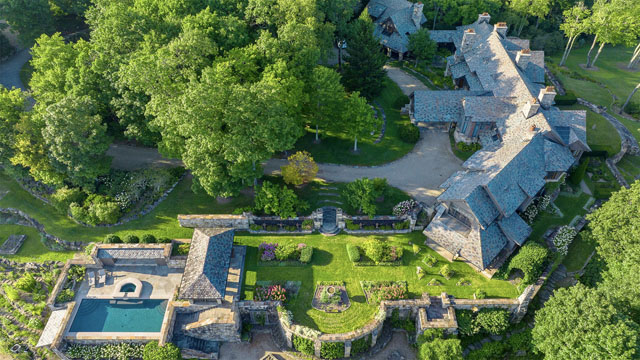Natural Harmony
02 Jun 2023
Understanding plant communities for successful landscape design
Story and photos by KRISTIN E. LANDFIELD

As a fervent plant lover, I’ve been known to brake abruptly when driving to observe a striking plant in someone’s landscape or on the side of the road. It helps to view plants in a variety of settings, to recognize that sincerely learning a plant means understanding how it behaves among other species in diverse milieux. It’s now summer in the mountains, and the roadsides are resplendent with wildflowers. Along with the signature cool evenings and dewy mornings, flowering plants are on full display. In sunny ditches along roadside streams, profuse strands of Penstemon, Eryngium and Lobelia species flower with summertime splendor. Sourwood trees (Oxydendron arboretum) and Summersweet (Clethra alinifolia) are now heavy with panicles of white blooms that call to butterflies, bees and feisty hummingbirds.
For flower lovers, the arrival of the summer months marks a peak point in the year—the height of brilliance among showier species (most plants reproduce with flowers, but not all are obvious). Gardening with flowering plants is especially appealing here on the plateau, where, with our ample rainfall and clean air, herbaceous plants reward us with their fresh foliage and vibrant blooms. At a garden center, it's tempting to grab one or two of everything in flower. To be clear: I am not condemning such impulse per se; rather, I’m suggesting that we meet this impulse with a framework for how to best incorporate that urge into a successful and authentic landscape design.
The southern Appalachian Mountains host one of the richest ecosystems in the temperate world. Biodiversity, in both variety of species and abundance of each, is robust and offers a dynamic palette of native plants to celebrate in our planned landscapes. As discussed in our April/May 2023 issue, there is an ever-growing need to incorporate more natives into our home and community landscapes. Our wild spaces are shrinking—an incontrovertible reality in 2023. While ardent efforts to protect such spaces are of critical importance, supporting wild spaces at home is arguably our most effective means to safeguard these mountains and the creatures who inhabit them—including us. Fortunately, our rich native plant palette allows us to do this beautifully, with joy and abundance rather than tedious sacrifice.
I’m an unabashed lover of plants and varied garden styles, not a native plant purist. There are many circumstances in which a well-mannered ornamental plant, known to remain in a cultivated space, can be a brilliant addition to a garden. That said, I cannot overstate the importance of incorporating natives into our landscapes. Beyond haphazardly installing indigenous plants, however, it’s essential that we advocate for natives with aesthetics and efficacy. Frank Lloyd Wright advised his architecture students: "Study nature, love nature, stay close to nature. It will never fail you." Wright was teaching his students to derive inspiration from the essence of organic forms and naturally occurring relationships, not to copy exactly what one sees—that would simply be the woods. When we garden, we are intervening. Often, it’s a place that has been previously disrupted, and one goal is to restore the site in an appealing way. In nature, naked soil is almost always the undesired result of a temporary disturbance. Subsequently, the system restores the soil by allowing plants to reclaim that space via decomposition, germination and proliferation, especially critical for erosion mitigation in the mountains.
Hiking trails are vibrant classrooms to learn effective arrangement for planting design. Plants always exist in groups, never as single members. John Muir observed, “When we try to pick out anything by itself, we find it hitched to everything else in the universe.” Similarly, Dolly Parton sang about interwoven plant communities: “The hills were alive with wildflowers…And the flowers I knew/In the fields where I grew/were content to be lost in the crowd.” Plants live in interconnected communities whose distribution and morphology perform particular ecological functions within site-specific conditions. Constrained resources give rise to distinct characteristics of a plant community—a shady rocky area is only hospitable to members that have co-adapted to share resources under those conditions. At home, we can discern constraints that help inform which community of plants will be appropriate for the site we have. As with language, poetic structure that restricts prose can create a perfect framework for harmony.
The more I think about ecologically responsible gardening, I realize that rather than a purist, perhaps I’m a gardenist—an advocate for more plants and more gardens overall—plenty more, then triple whatever number that is. A successful and lush planting is always more appealing than a skimpy one. The ground layer, low-growing matrices of plants that preserve our soil and feed our ecosystem, is rarely populated sufficiently in traditional planting schemes. It’s summer, though, so the forest floor is covered with ferns, sedges and asters. Let’s walk these woods and hillsides to understand the elegant relationships within communities of organisms. Let’s seek, with humility, to emulate their harmony.













